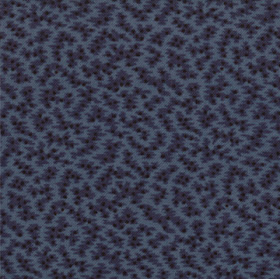I am always looking for interesting patterns in antique quilts and saw this one on an online auction months ago. Those pinks and grays look very "early 20th century," and I thought it might make a good pattern for my Morris Apprentice collection. It's the right time period and the idea of big squares to feature those fancy prints is always good.
The first thing I do is look up the design in BlockBase, my quilt pattern program, as I want to see if it's been published, when and what the names are. And if it's in there I don't have to draw it again. The block was easy to find. By seam structure it's classified as a square-in-a-square. It's one of the few that hasn't any piecing in that large inside square. There are just six listed and it's at the top left #2403.
I copied the design into EQ7, and while I had BlockBase open I looked at the name card.
Art Square---From the Ladies Art Company pattern company---early 20th century, and Carrie Hall.
Dottie's Choice -
Farm Journal
Village Square - Nancy Cabot in the
Chicago Tribune--- 1930s
I liked the Dottie's Choice name.
Dottie's choice is to lay on top of the couch in the
window so she can bark at the neighbors.
Here she is among the Christmas decorations.
But that had nothing to do with William Morris or Henry Dearle. I chose Village Square--it seemed evocative of the Morris workshop idea, so that's the block name for the pattern.
I copied the BlockBase drawing into EQ7 in a file that I had named Morris Apprentice.
In that file I imported the images for the fabrics in the fabric collection.
I went to Libraries
Fabric Library
Import
From Image Files
and went to a file I had created with the prints.
I highlighted all the JPGs and
Clicked on Open
And then on
Add to Sketchbook.
Then I could work on a quilt mockup using the fabrics before I actually had the fabrics in hand.
The original quilt alternated a plain block so I set up a quilt design in EQ.
And played with the shading.
Too minimal for me. (Maybe not for you.)
Each time I created a new idea I went over to
And then saved the image in the sketchbook to a file I called Village Square,
so I could keep track of all the designs and email them to Susan Stiff, the Moda designer I work with.
This is the look I liked in the original,
sort of a star that's a figure/ground puzzle.
I was thinking of the interlocking pattern you
see in Morris carpets of the era.
You could do it all with three pieces of yardage.
Here Becky Brown has fussy cut the
Artichoke print for an 8" block
Four pieces of yardage
But we often do projects with the precuts so here's a way to use the Layer Cakes---10" square precuts in a variety of scraps. I sent the digital sketch above to Susan. We were also looking for a kind of stained glass coloring since the Morris Apprentice, Henry Dearle, specialized in designing stained glass windows.
Susan figured out the yardage, instructions and how to make it work with a package of 10" squares.
Here's our collaborative effort, which you can find as a free pattern here:
Or if you'd rather have a paper pattern your quilt shop may have one of the printed leaflets.
How can you use BlockBase and Electric Quilt to do your own project mock-ups?
1) You just need to practice dropping BlockBase blocks into your EQ projects. I usually find the block in BlockBase first, note the number and then when I am in EQ Go to Libraries---Block Library and search BlockBase by number. Then add to sketchbook.
2) You also need to learn how to add fabric pictures to your EQ fabric library. It opens a whole world of designing, whether for yourself, your students or your customers. There are a gazillion fabric pictures on the web. Start collecting digital pictures for your files and then you can do your own designing to help you decide on the fabric before you buy it.




























































